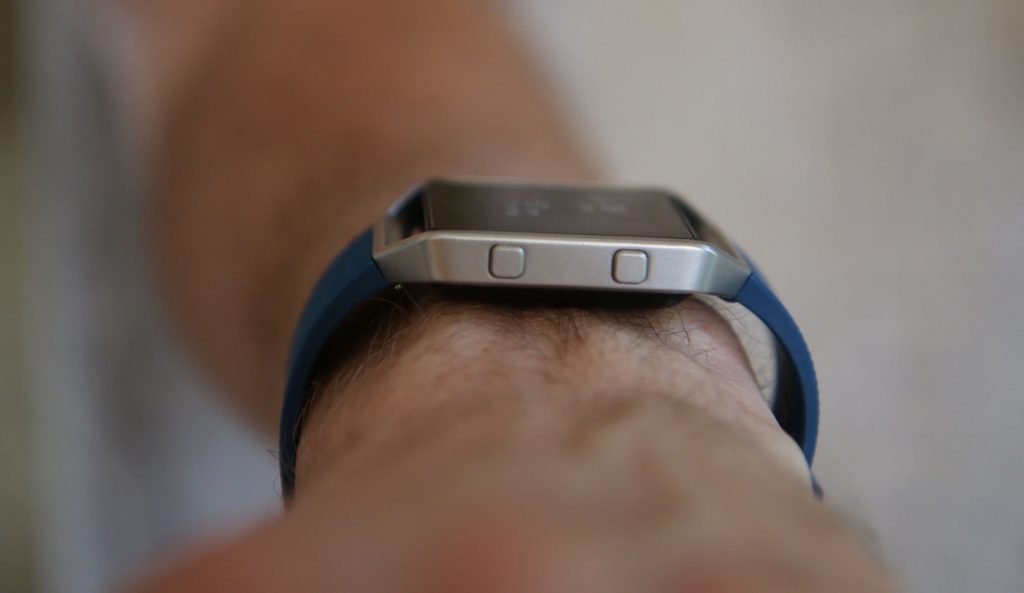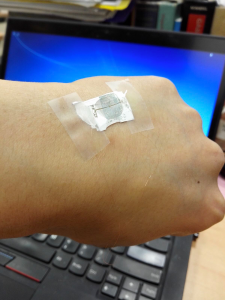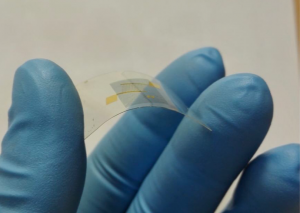Wearable health monitoring devices are among the most exciting scientific developments. Technology capable of tracking vital signs, activity, fitness, and sleep quality such as in the Apple Watch and Fitbit already have the potential to encourage healthier lifestyles and even save lives. Over the past several years, these devices have been instrumental in alerting a number of users of abnormal heart rates, driving them to seek immediate medical attention, and ultimately saving them from life-threatening conditions. In at least one case, unusual Fitbit data eventually led to the discovery of an early pregnancy.
Pushing the boundary in this field are recent Israeli developments in self-charging, self-repairing disease detectors incorporated into everyday clothing.
Spearheaded by Professor Hossam Haick of the Wolfson Faculty of Chemical Engineering at the Technion – Israel Institute of Technology and postdoctoral researcher Weiwei Wu, these devices include electrodes and sensors applied onto wearable nylon textiles and permeable skin-mimicking bandages that constantly monitor breath rate, skin odor and chemical biomarkers (saliva, sweat). Specific irregularities in these parameters will indicate the presence of a disease, according to the research results published in Advanced Materials earlier this year.
Though certain technologies already possess these capabilities, Haick’s devices set themselves apart through self-sustainability. In particular, the gadget hopes to use cutting-edge materials that heal themselves and take advantage of the body’s wasted energy. Its components harvest the energy of body heat and movement, and they use synthetics that regenerate its properties upon damage. These advances alleviate risks such as leaving a device uncharged, torn or scratched. This technology will increasingly improve the quality of life through becoming a remote nurse that constantly accompanies an individual, according to the researchers.
Due to the constant monitoring of an individual’s vitals, these sensors provide a diagnosis of diseases in early stages. This prevents diseases from progressing, which Haick cites as a motivation for his research. “The results are very encouraging,” Haick tells NoCamels via e-mail, pointing to recent testing done on tuberculosis screening using sensors integrated into bandages. Among the standard “healthy” ranges set for the devices are 60 to 100 heartbeats and seven to eight breaths per minute.
However, the product is only in its preliminary stages. According to Haick, though the discrete devices exist, the sensor and energy units are yet to be integrated into one product. Currently, the research team awaits a patent on a breathable self-healing platform imitating skin. Haick also cites energy generation, flexibility and accuracy as challenges for the device. Although his research team waits for further results, Haick states he is already seeking investors for what he calls a “promising and prospective technology.”
Sign up for our free weekly newsletter
SubscribeThe wearable health device sector has tremendous potential. Experts predict this market will reach nearly $20 billion by 2021. Not only do these technologies monitor a patient’s vitals, they also facilitate communication between patients and healthcare professionals around the clock and reduce the cost of human labor associated with constantly checking patients. Furthermore, they also have the potential to assist doctors, where technologies such as Google Glass help surgeons visualize CT and X-Ray scans while performing surgery consecutively, saving vital time and increasing accuracy.
The new system is one in a long list of achievements for the award-winning scientist. In 2014, alongside Professor Nir Peled of Tel Aviv University’s Sackler Faculty of Medicine, Haick developed NaNose, a microchip incorporated into a breathalyzer capable of diagnosing various diseases such as Parkinson’s disease, multiple sclerosis, Alzheimer’s and cancer. The device uses the presence of specific volatile organic compounds, which are unique fingerprints for various forms of disease and cancer.
SEE ALSO: Innovation Nation: Twelve Israeli Inventions That Are Changing The World
Haick says the NaNose is able to differentiate between malignant and benign tumors, as well as their source, with 90 percent accuracy. The European Commission awarded him $6.8 million for further development of the technology. Alongside this grant, Haick has received the Bill and Melinda Gates Foundation Award and been named on “World’s 35 leading young scientists” on MIT Technology Review for his research in non-invasive disease detection methods. He currently serves as faculty and F.M.W. Academic Chair in the Department of Chemical Engineering at Technion – Israel Institute of Technology.
Haick’s research group is currently working on other related projects. Notably, the team is developing self-repairing multipurpose health monitors that resemble tattoos imprinted on skin. This device will make use of a field-effect transistor (FET), which can modify its behavior through a varying electric field. The group is also improving existing self-generating power sources for wearable device platforms.
Related posts

Editors’ & Readers’ Choice: 10 Favorite NoCamels Articles

Forward Facing: What Does The Future Hold For Israeli High-Tech?

Impact Innovation: Israeli Startups That Could Shape Our Future







Facebook comments